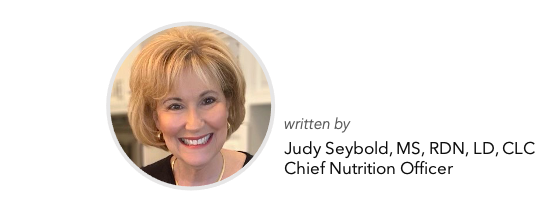Going Mainstream: The Kosher Diet

This month, millions of people will celebrate Passover, a major Jewish high holiday that represents a time of celebration and reflection. Passover also features faith-based foods and rituals, some of which have found their way into the mainstream, such as the “kosher diet."
Today, many people from a variety of backgrounds shop for kosher foods because they perceive it to be healthier and tastier than their non-kosher counterparts. Jewish dietary laws do require food ingredients, additives, and production processes to meet stringent guidelines for safety and purity. Which begs the question: Could following a kosher diet be right for you?
Sifter can help you find foods that are certified kosher
Start here →
What exactly is "kosher"?
The English word “kosher” is derived from the Hebrew root “kasher,” which means to be pure, proper, or suitable for consumption. The laws that provide the foundation for a kosher diet are found within the Torah, the Jewish book of sacred texts. They provide clear and comprehensive eating guidelines that not only include which foods are allowed, but how they’re produced, processed, and prepared. These guidelines are divided into three major categories:
- Meat: From ruminant animals with cloven (or split) hooves, such as cows, sheep, goats, lambs, oxen, and deer, to domesticated fowl and derivative products like bones and broth.
- Dairy: Milk, butter, yogurt, and cheese from a kosher animal, and free from meat derivatives.
- Pareve: Foods that are neither meat or dairy, such as eggs, fish, fruit, vegetables, grains, pasta, coffee, and tea. Since products labeled as “pareve” are processed on equipment free of any dairy foods or meat, meatless foods cannot contain any form of meat, which is helpful for those on a vegetarian or vegan diet.
A laundry list of rules accompanies these foods. For example, how meat is slaughtered and prepared; how vegetables and fruits must be checked for insects; even how foods should be mixed since combinations like meat and dairy are forbidden. Jewish law requires all foods be made on kosher-approved equipment, certified by an Orthodox rabbi, and eaten with the proper utensils. Even wine, considered significant to many religious occasions, must be fully handled by practicing Jews for the final product to be deemed kosher. And on Passover, there are additional restrictions not to eat “Chametz” – anything with grain that has risen or fermented, like breads, pastas, beers, and liquors.
Kosher in practice
With so many limitations, one might wonder how user-friendly a kosher diet is. The good news is potentially very, depending on your goals and motivation. Food labeling makes it easy to know what you can have and what you can’t. Following the kosher diet successfully is also less about studying the rules and more about knowing which foods make the most sense for your lifestyle and wellness.
If you’re intrigued by the idea of going kosher, follow these steps to get started:
- Know your objective. If you’re looking to go kosher for purely religious reasons, then yes, you may want to spend time understanding the Jewish laws that govern the diet. But if you’re simply looking for a way to eat healthier – to follow a vegan or vegetarian diet, for example, or to enjoy foods with minimal processing, or to take clean eating to the next level – you don’t have to go that far. Instead, you can simply identify the categories of foods you like. And then…
- Look for the kosher label. Most foods certified as kosher say so on their packaging by way of a label showing they’ve met all the necessary requirements. All items identified will be kosher-acceptable products. While there are dozens of different kosher labels from different certifying organizations, most come from the Orthodox Union (OU). The labels may also indicate whether a food is considered dairy, meat, or pareve. Here’s a quick guide of what to look for:
- A “K” means kosher certified. If it’s in a circle, it means the company OK Kosher Certification approved it.
- If there’s a “D,” it means the product has dairy or that the processing equipment used also handles dairy. (Remember, you can’t have dairy and meat together, which is why this designation is important.)
- The word “pareve,” “parve,” or a “U” after the “K” means it’s neutral – not dairy or meat, but still kosher.
- A “P” means the product is kosher for Passover.
- Search with our SiftTag. For easier shopping, Sifter can help you find which foods are kosher. Click on Lifestyle Diets, then scroll down and select either Kosher or Jewish-style. We’ve done all the work for you!
You don’t have to be Jewish or eating for religious reasons to embrace a kosher approach. As one of the most ancient food traditions of all, a kosher eating style is available to everyone.
updated March 2024
Sources
Kosher Food: Everything You Need to Know
Health Benefits of a Kosher Diet
Why is kosher food soaring in popularity?
Less than 2% of the US population is Jewish. So why is 41% of the country’s packaged food kosher?